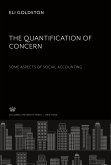Master's Thesis from the year 1996 in the subject Business economics - Personnel and Organisation, Brunel University (Unbekannt), language: English, abstract: Inhaltsangabe:Abstract:
Services in the field of information technology (IT) are an emerging and expanding market. The quality with which they are delivered to the customer and the effectiveness of their provision determine the economic success of an enterprise to a large extent. Therefore, the dissertation centers around service quality and organizational effectiveness.
Introducing, the characteristics of services in general - intangibility, inseparability, heterogeneity, and perishability - and the rote of projects in IT services are explained. Then, organizational effectiveness is defined as internal efficiency plus adaptability to external demands. Two models are compared showing that organizational effectiveness consists of several factors - e.g. motivation, management leadership, or structure - which indeed can be measured via a particular diagnosis questionnaire. Analogously, two service quality models are put forth. They reveal that total quality is comprised of the technical quality of the service outcome (objective quality) and the functional quality of the process (subjective quality). Likewise, service quality can be evaluated by regarding ten determinants and graphically displaying them in an importance-performance grid.
Relating to both points above, aspects in marketing (internal, interactive) and operations (service as a basic function and as one objective) are considered.
The so-gained theoretical insights are practically applied in an investigation of an IT service department for which specific recommendations are deduced. Generally, results suggest that service quality and organizational effectiveness are somehow related and commonly influenced by organizational structure, customer orientation, as well as management, leadership, and motivation. The discussion of these points finally leads to the conclusions that (1) a matrix structure in IT services is more apt than any other one, (2) a people-oriented management style is of crucial importance for motivating people and reaching performance, and (3) orientation towards the customer and marketing the buyer-seller interactions decisively influences the perception of service quality.
Inhaltsverzeichnis:Table of Contents:
List of Figuresix
Preface and Acknowledgementsx
Prologue1
1.Introduction3
2.Managing Services and Organizational Effectiveness in Business Administration Literature5
2.1General Characteristics of Services5
2.2Organizational Effectiveness9
2.3Service Quality15
2.4Marketing and Operations Aspects in Services20
2.4.1Internal and Interactive Marketing20
2.4.2Customer Service vs. Resource Utilization23
3.Examination of an IT Service Department in Practice29
3.1Organizational Framework30
3.1.1General Overview30
3.1.2Role and Structure of the IT Department31
3.2Current Situation Analysis33
3.2.1Organizational Effectiveness33
3.2.2Service Quality39
3.3Preliminary Conclusions and Recommendations from Practice43
3.3.1Inference Resume43
3.3.2Suggestion A: New Approach to Project Management45
3.3.3Suggestion B: Better Leadership Behaviour/Qualification47
3.3.4Suggestion C: More Orientation towards the Customers48
4.Discussion51
4.1Organizational Structure in IT Services51
4.2Management, Leadership, and Motivation55
4.3Customer Orientation and Service Quality59
4.4Total Quality Management62
4.5Implications for Further Research65
5.Conclusions67
Epilogue69
Appendix 1: Questionnaire and Results of the Organizational Diagnosis70
Appendix 2: Classification Scheme and Distribution of the Answers in the Organizational Diagnosis72
Appendix 3: Queries and Results of t...
Hinweis: Dieser Artikel kann nur an eine deutsche Lieferadresse ausgeliefert werden.
Services in the field of information technology (IT) are an emerging and expanding market. The quality with which they are delivered to the customer and the effectiveness of their provision determine the economic success of an enterprise to a large extent. Therefore, the dissertation centers around service quality and organizational effectiveness.
Introducing, the characteristics of services in general - intangibility, inseparability, heterogeneity, and perishability - and the rote of projects in IT services are explained. Then, organizational effectiveness is defined as internal efficiency plus adaptability to external demands. Two models are compared showing that organizational effectiveness consists of several factors - e.g. motivation, management leadership, or structure - which indeed can be measured via a particular diagnosis questionnaire. Analogously, two service quality models are put forth. They reveal that total quality is comprised of the technical quality of the service outcome (objective quality) and the functional quality of the process (subjective quality). Likewise, service quality can be evaluated by regarding ten determinants and graphically displaying them in an importance-performance grid.
Relating to both points above, aspects in marketing (internal, interactive) and operations (service as a basic function and as one objective) are considered.
The so-gained theoretical insights are practically applied in an investigation of an IT service department for which specific recommendations are deduced. Generally, results suggest that service quality and organizational effectiveness are somehow related and commonly influenced by organizational structure, customer orientation, as well as management, leadership, and motivation. The discussion of these points finally leads to the conclusions that (1) a matrix structure in IT services is more apt than any other one, (2) a people-oriented management style is of crucial importance for motivating people and reaching performance, and (3) orientation towards the customer and marketing the buyer-seller interactions decisively influences the perception of service quality.
Inhaltsverzeichnis:Table of Contents:
List of Figuresix
Preface and Acknowledgementsx
Prologue1
1.Introduction3
2.Managing Services and Organizational Effectiveness in Business Administration Literature5
2.1General Characteristics of Services5
2.2Organizational Effectiveness9
2.3Service Quality15
2.4Marketing and Operations Aspects in Services20
2.4.1Internal and Interactive Marketing20
2.4.2Customer Service vs. Resource Utilization23
3.Examination of an IT Service Department in Practice29
3.1Organizational Framework30
3.1.1General Overview30
3.1.2Role and Structure of the IT Department31
3.2Current Situation Analysis33
3.2.1Organizational Effectiveness33
3.2.2Service Quality39
3.3Preliminary Conclusions and Recommendations from Practice43
3.3.1Inference Resume43
3.3.2Suggestion A: New Approach to Project Management45
3.3.3Suggestion B: Better Leadership Behaviour/Qualification47
3.3.4Suggestion C: More Orientation towards the Customers48
4.Discussion51
4.1Organizational Structure in IT Services51
4.2Management, Leadership, and Motivation55
4.3Customer Orientation and Service Quality59
4.4Total Quality Management62
4.5Implications for Further Research65
5.Conclusions67
Epilogue69
Appendix 1: Questionnaire and Results of the Organizational Diagnosis70
Appendix 2: Classification Scheme and Distribution of the Answers in the Organizational Diagnosis72
Appendix 3: Queries and Results of t...
Hinweis: Dieser Artikel kann nur an eine deutsche Lieferadresse ausgeliefert werden.








